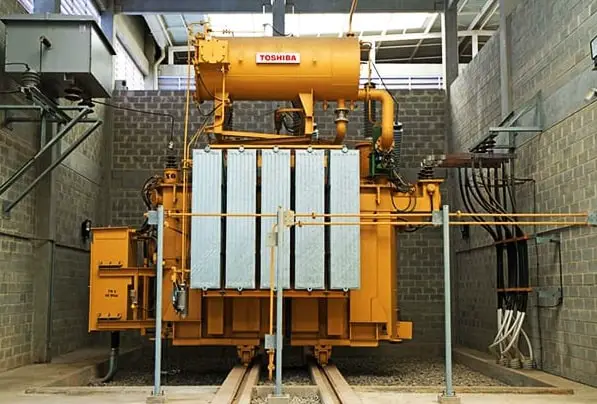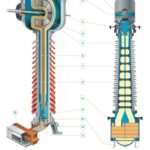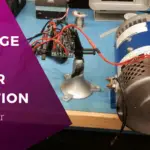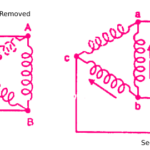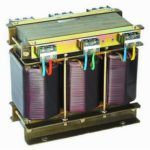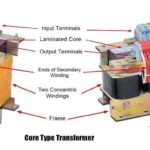Condition monitoring for transformers is the process of monitoring a parameter of conditions in transformer (moisture, temperature, etc.), in order to identify a significant change which is indicative of a developing fault.
Power transformers are critical and costly assets in the electric power system beginning with the grid, transmission, and down to the plant. They are one of the most important electric apparatus for providing reliable energy flow.
As an asset class, transformers constitute one of the largest investments in a utility’s system or in an industrial complex. For this reason, transformer condition assessment and management is a high priority.
Each entity is unique and the investment levels in asset condition and assessment management vary according to the risk level and investment return models.
The transformers are stratified according to the criticality of individual transformers and in this approach, the most critical transformers receive the highest investment of condition assessment and management tools and less critical and non-critical transformers receives the decreased level of asset allocations.
The performance expectation of a transformer is:
- Transfer of voltage level
- Supply of required loads and
- Accommodating voltages fluctuations to a specified range
Need for Condition Monitoring
- Expensive capital equipment
- Not easy to repair or replace
- Advanced computer-aided design practices.
- Transformers operation.
- Condition Monitoring imperative.
- A corrective/preventive action can be initiated
Types of Condition Monitoring
The condition monitoring of transformer may be classified as:
- Working condition monitoring
- Emergency condition monitoring
The first is to watch all the parameters and take corrective actions to keep them within specified limits, whereas the second is to bring out the equipment from the working system by sharp monitoring of the type of emergency occurs.
Working Condition Monitoring of Transformer
The working conditions of transformers in the substation are classified as “ATTENDED” but those in distribution are classified as “UNATTENDED”. Hence, condition monitoring differs and classified as follows:
- Continuous monitoring (hourly monitoring) for transformers in the substation
- Random monitoring in case of distribution transformers
The objective of transformer maintenance is to safeguard against breakdowns by detecting potential causes and eliminating them. Therefore, periodic transformer maintenance will ensure many years of trouble-free operation.
Transformer maintenance schedules should determine according to the critical or noncritical nature of the transformer and the load that is connected to it.
A transformer that has been operating satisfactorily for many years may, because of neglection, suddenly fail without warning or any outward sign of distress thereby causing expensive repairs or replacement and loss of production.
The term maintenance as applied to transformers consists of:
- keeping all peripheral parts clean and protected from dust, dirt, and corrosion
- testing the winding insulation, core, insulating and cooling liquid to check its suitability to onward use
- inspecting and testing the protective and indicating devices for its healthiness
- inspecting the transformer internally for any abnormalities
- inspecting the auxiliary equipment such as fan, coolers, lightning arrestors and grounds, etc. for soundness
Although a transformer with its associated equipment does not have as many moving parts as most of electrical pieces of equipment, the same rules still apply.
These basic rules are:
- current-carrying components must operate in a moisture-free insulating liquid or area
- the installation must be kept clean from dirt, rust or corrosion
- all moving parts must be kept well-lubricated
- all enclosures containing insulating and cooling liquids as well as weatherproof enclosures that protect the equipment from the weather must be kept tight
Frequency of Inspection and Maintenance
Frequency on Inspection of a transformer depends upon:
- Size
- Type
- Existing practice
- Prevailing atmospheric conditions
Frequency of inspection and maintenance greatly depend upon size and type of the transformer and also on the prevailing atmospheric condition at site and by existing practice and experiences.
Normally the large power transformers supplying critical load should receive more frequent inspection and maintenance rather than small transformers delivering lighting loads or less critical circuits.
For a particular transformer, a maintenance schedule can be fixed in consultation with supplier. Once a schedule has been established it should be closely followed and various events shall be recorded.
A general guideline of transformer maintenance is laid down and shall be modified to suit the actual equipment under use. Before starting any maintenance work safety regulations enforced must be strictly observed.
Typical Condition Monitoring Schedule of Transformer
The typical condition monitoring schedule of a transformer is given below.
|
SI.
No.
|
Inspection Frequency
|
Items to be Inspected
|
Inspection Notes
| Action Required if Inspection shows Unsatisfactory Conditions |
|
1
|
Hourly
|
1) Ambient Temp.
2) Winding Temp.
3) Oil temperature.
4) Load(amperes)
5) Voltage
6) Free delivery of water in case of water-cooled transformer
7) Check for full flow indication by oil flow indicator
| Check that temperature rise is reasonable Check against rated figures Check for oil traces in the water at outlet Ensure that a sufficient quantity of oil flow |
Shut down the transformer and investigate if either is persistently higher than normal
Isolate heat exchanger and put the stand by in the circuit. Rectify leak in the faulty heat exchanger
|
|
2
|
Daily
|
1) Oil level in transformer
2) Oil level in bushings
3) Leakage of water into the cooler
4) Relief vent diaphragm
5) Dehydrating breather
6) Oil level in OLTC conservator
7) Pressure relief diaphragm of OLTC DS chamber
|
Check against transformer oil temperature
–
Check that air passages are free.
Check the colour of the active agent
Low/Increasing/Overflowing
Check for damage
|
If low, top up with dry oil, examine transformer for leaks
If low bring it to correct oil level
Replace if cracked or broken
Replace if cracked or broken
If silica gel is pink, change by spare charge. The old charges may be reactivated for reuse.
Replenish oil if low. If increasing or overflowing check for oil leakage from the main tank to OLTC DS chamber
Replace by new one
|
|
3
|
Quarterly
|
1 ) Bushing
2) Oil in the transformer
3) Cooler fan bearings, motors, and operating mechanism
4) OLTC
5) Indoor transformers
|
Examine for cracks and dirt deposits
Check for dielectric strength and water content
Lubricate bearings. Check gearbox.
Examine contacts.
Check manual control and interlocks
Check oil in OLTC driving mechanisms
Check ventilation
|
Clean or replace
Take suitable action to restore the quality of oil
Replace burnt or worn contacts or other parts
Filter or replace
|
|
4
|
Half Yearly
|
Oil cooler
|
Test for pressure
|
|
|
5
|
Yearly (or earlier if, the transformer can be conveniently be taken out for checking)
|
1)Oil in the transformer
2)Oil filled bushings
3)Gasket joints
4)Cable boxes
5)Surge diverter and gaps
6) Relays, alarms, their circuits, etc.
7)Earth resistance
8)Winding
|
Check for acidity and sludge. DGA
Check for tan delta and Capacitance
Check for sealing arrangements for filling holes. Examine compound for cracks
Examine for cracks and dirt deposits
Examine relay and alarm contacts, their operation, fuses etc. Check relay accuracy, etc.
Tan δ and Capacitance
|
